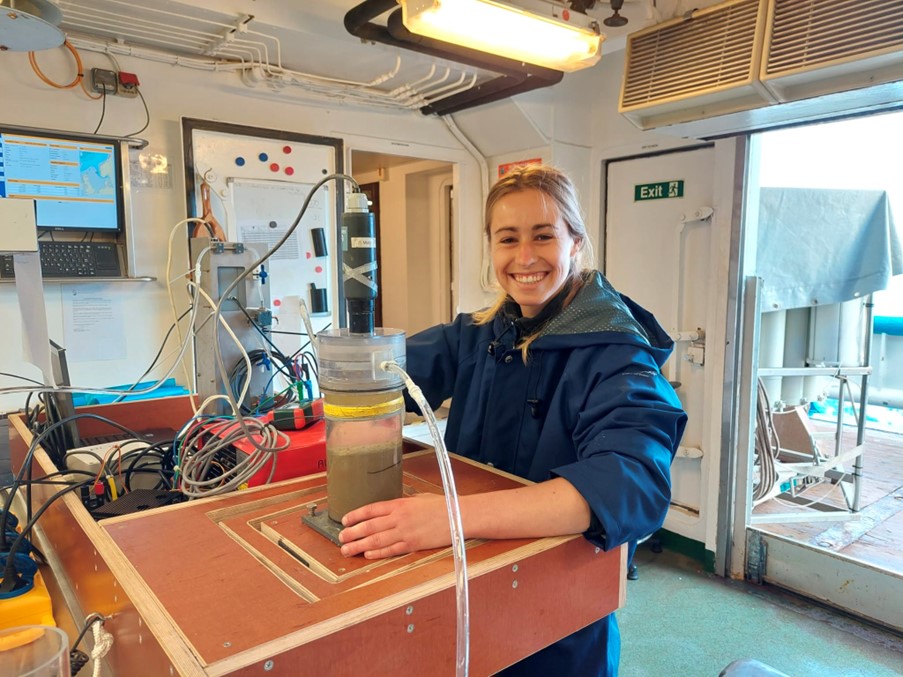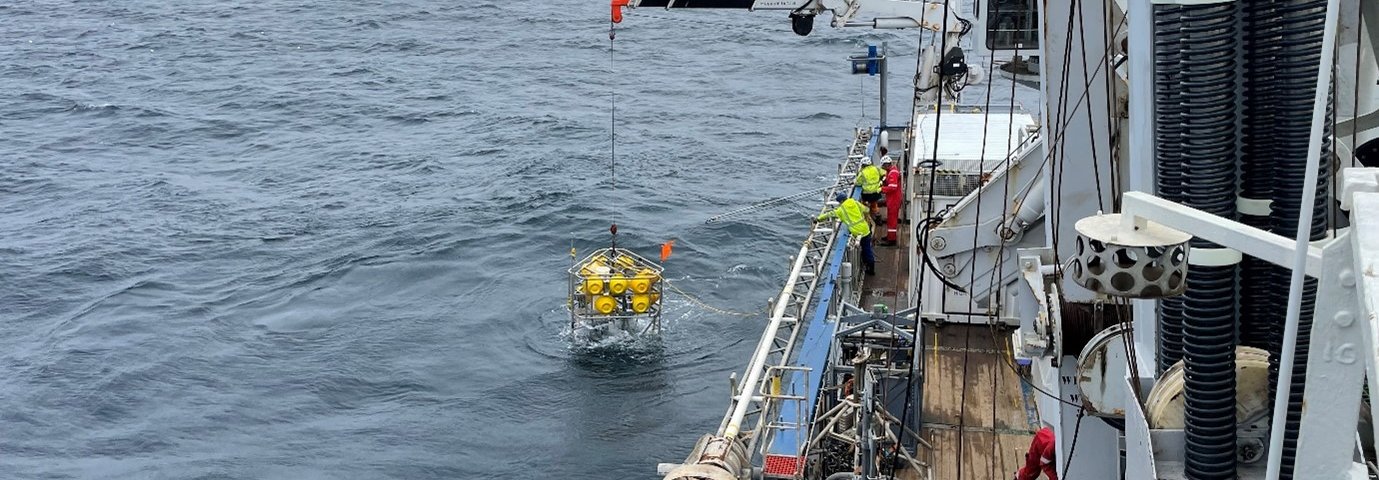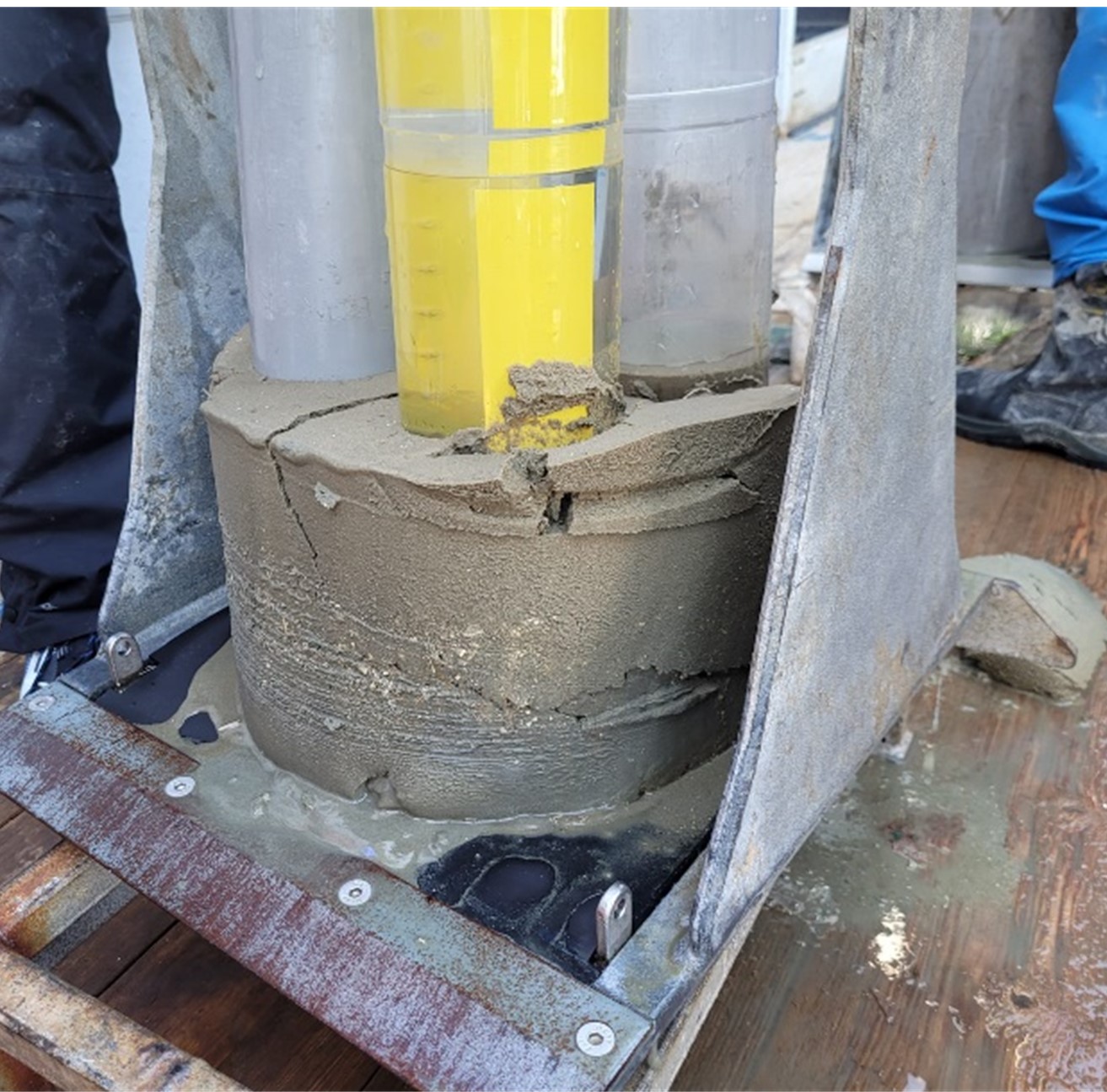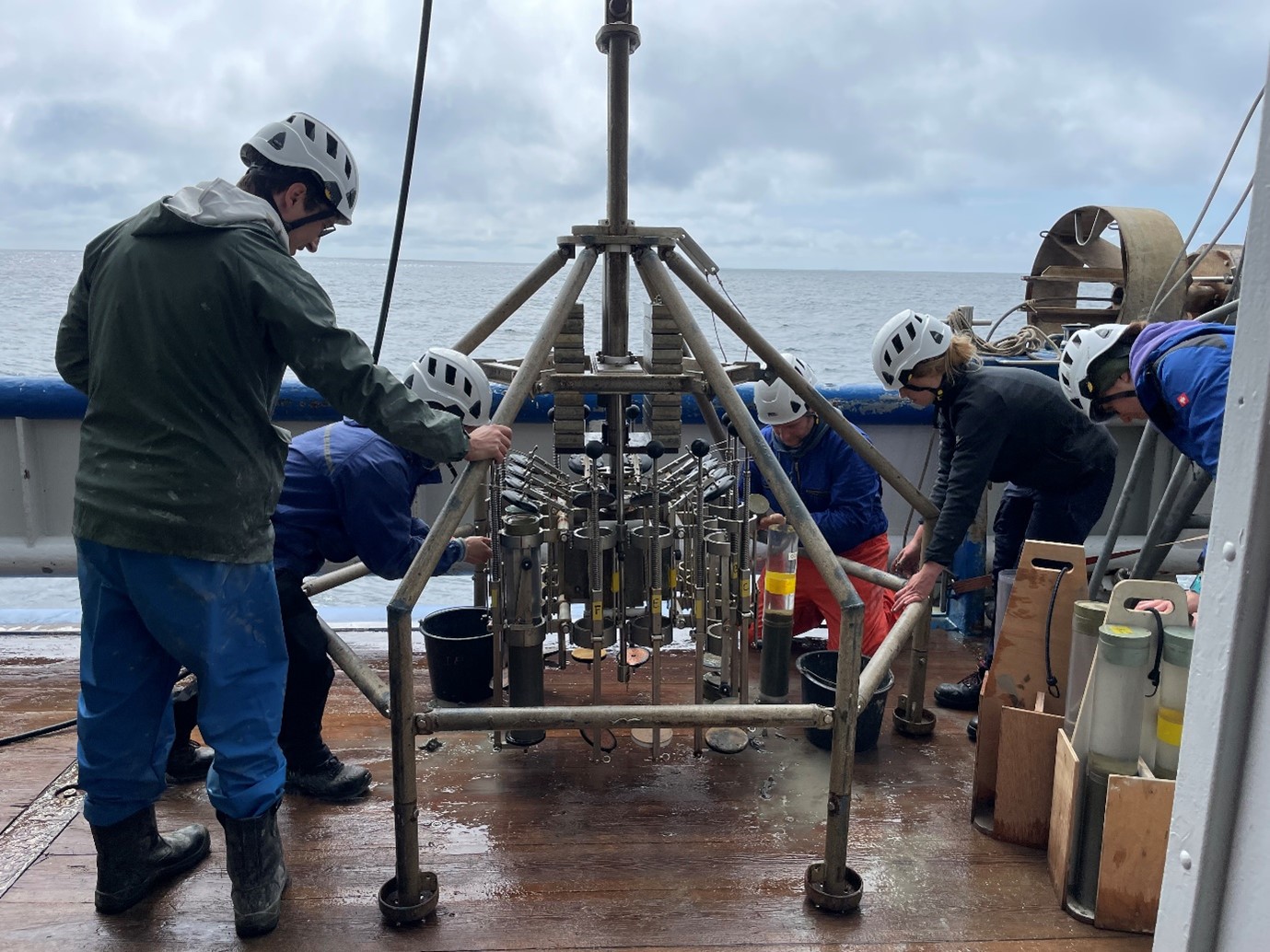Expedition to the Norwegian Trench to explore carbon burial
To explore the role of the North Sea in the global climate system, the NIOZ research vessel Pelagia embarked on an expedition to the Norwegian Trench. On 15 June, the ship docked back at the NIOZ port on Texel, with on board Anna Enge, PhD student Hydraulic Engineering at TU Delft. She takes more than twenty sediment cores and hundred grain size samples back to the TU Delft laboratory. She will explore the dynamics of the sediment that can play a crucial role in the storage of carbon.
The ocean plays an important role in the uptake and storage of carbon. Long-term storage can be achieved by burying carbon in deep-sea sediments. The Norwegian Trench, a deep trench in the North Sea along the Norwegian coast, is known as a depositional area for North Sea sediments and the main pathway of sediment export of the North Sea. Therefore, Enge aims to identify and quantify sediment dynamics in the Norwegian Trench. It is part of the North Sea- Atlantic Exchange (NoSE) project.
During the expedition, Enge hoists samples of sediment on board from the 400-metre-deep trough. The ship bobbles up and down at times. Nevertheless, she immediately sets to work investigating some samples: under what conditions will the sediment move?
Enge took samples of sediment with box core sampling tubes (left) and a multi-corer with twelve sampling tubes (right).
Transport and deposition of sediment
Enge studies sediment properties along with flow velocities. This helps her to determine boundary conditions and spatial and temporal variations in sediment transport. One way to do so, is the erosion experiment on board, called the Gust chamber. The plan to measure erosion on a moving ship required prior preparation, Enge explains: "The North Sea by no means guarantees calm waters. I didn't want my sediment samples for my erosion experiment to be shaken.” To compensate for the movement of the ship, the technicians at TU Delft built a table on which the experiment does not feel the movement.
Generated shear stresses in the Gust chamber will go over the sediment surface of the sample. “I investigate at wat flow velocities resuspension can occur. This way, we can identify hotspots for erosion and carbon transport on one hand, and for deposition and carbon burial on the other.” Eventually these hotspots are highly interesting to further investigate in relation to climate change.

Another way to investigate sediment dynamics, is recording flow velocities of the water deep in the trench. Enge left two measuring instruments behind, at five and twenty meter above the bottom. These will record flow velocities in high resolution over a year and provide insight into the seasonal variability. Enge is looking forward to next year: “We can link what we know from this year's sediment characteristics to the velocity data we'll get next year. It all adds up to a very promising database and will help us determine the dynamics of sediment in the Norwegian Trench."
Understanding the role of the Trench in the global climate system
On the ship, six PhD students from several institutes (Royal Netherlands Institute for Sea Research NIOZ, Utrecht University and University of Groningen) collaborated on the NoSE project. In particular, Enge focuses on the physical factors that affect the transport of sediment such as the effects of ocean current velocity. Other focus areas within the NoSE project are, for example, the organic and inorganic water chemistry and paleo-analysis of the sediment. Enge: "This multi-disciplinary approach allows us to look at research questions from different perspectives. Our joint projects will provide insights into the role of the Norwegian Trench in the global climate system. It's important to incorporate this role into climate models and validate them with the data we gain through our research."




